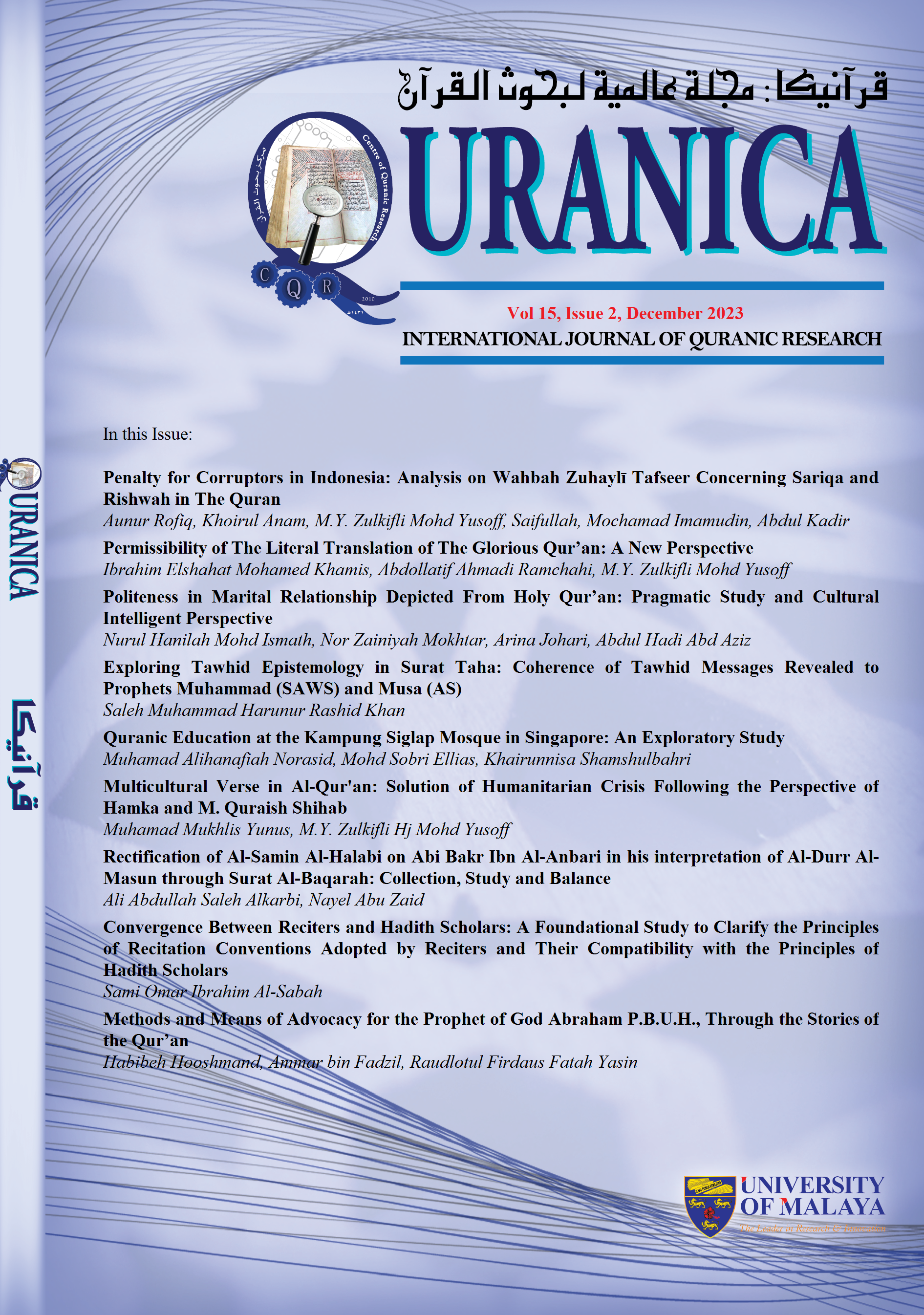Exploring Tawhid Epistemology in Surat Taha: Coherence of Tawhid Messages Revealed to Prophets Muhammad (SAWS) and Musa (AS)
Main Article Content
Abstract
The objective of this article is to explore tawhid epistemology (i.e., the study of knowledge on Absolute Monotheism) in Surat Taha, by interpreting meanings and contexts of each of its verses. Research methods include: (a) a qualitative content analysis by using frequency counts of certain keywords and concepts, and (b) context analysis of several pedagogical passages, each providing certain lessons for believers and/or warnings for nonbelievers. The results show that although the entire sura was revealed to Prophet Muhammad (SAWS) via angel Gabriel, its middle section narrating the story of Musa (AS) includes several episodes of earlier revelation in which Allah (SWT) had spoken to Prophet Musa (AS) directly without conveyance by Gabriel. Irrespective of such bimodal revelations, messages on tawhid in Surat Taha are remarkably coherent in theme and style, whether they were revealed to Prophet Muhammad (SAWS) or earlier to Musa (AS). These include, among others: (a) three different types of tawhid, (b) the Creationist doctrine, derived from the doctrine of tawhid, (c) the Resurrection doctrine, a corollary of the Creationist doctrine, and (d) Allah’s miracles, attributable to His Power of Creation. Structurally, Surat Taha is unique in its approach starting with some of the fundamental principles of tawhid in a short preamble, which are then embedded masterfully inside the story of Musa (AS) in a tight text, consisting largely of sharp and short verses. Most of these elements of tawhid are repeated and expanded in the concluding section, providing consistency of messages throughout the entire sura. (249 words)
Downloads
Article Details
Disclaimer
QURANICA makes every effort to ensure the accuracy of all its contents. However, opinions, discussions, views and recommendations are expressed in this journal do not necessarily reflect the official policy of QURANICA or views of its editors or publishers. Therefore, QURANICA and its publishers will not be liable for any controversy may be arisen. The journal reserves the right, at its sole discretion, to change its terms and conditions of publications.
Copyright
It is a condition of publication that manuscript submitted to the journal have not been published, accepted for publication, nor simultaneously submitted for publication elsewhere. By submitting a manuscript, the author(s) agrees that copyright for the article is transferred to the publisher, if and when the manuscript is accepted for publication.
